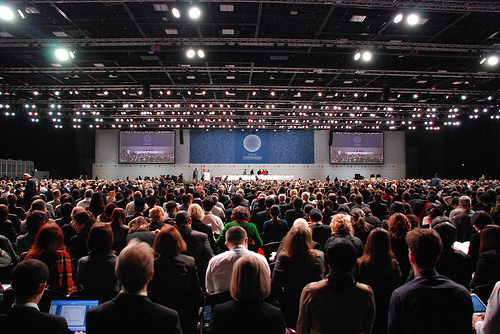President Obama arrived in Copenhagen on the last scheduled day of the conference, and personally hammered out a rough agreement among a few of the most important countries that are not yet participating in quantitative targets: the US itself, China, India, Brazil and South Africa. Consistent with the dysfunctionality of the UNFCCC, a few small trouble-making countries then prevented the general assembly from adopting this new ‘Copenhagen Accord.’ At that moment, it could have been seen as still-born.
And yet, early in 2010, there have appeared important rays of hope for those who would like to see genuine progress in addressing emissions of greenhouse gases. The Copenhagen Accord called for countries to specify, with an initial deadline of January 31, what steps they were prepared to take in the current decade.
The response was better than anticipated. By March, 102 countries (comprising 81per cent of global emissions), had responded by submitting plans. More importantly, seven of the biggest non-Annex I parties (developing countries) were among those specifying numbers for 2020 – quantitative emission targets – even though they didn’t have to do so. The seven were Brazil, China, India, Indonesia, Korea, Mexico, and South Africa. (So did Israel, Singapore, and some others.) The submissions are summarized in the table here, which is an abbreviated version of one prepared by the US Climate Action Network.
Some American businessmen and environmentalists will complain that the reductions in carbon intensity that China and India are talking about are not much different from the efficiency improvements that they would probably be achieving anyway, under Business As Usual (BAU). This is true. But it is not reasonable to ask much more than this from the poor countries in their first budget period. Nor is it necessary to ask any more than this, in order to forestall leakage to developing countries. Fears of leakage and lost competitiveness have probably been the number one obstacle to a legal agreement, for example in the US Senate.
Much more serious is the critique that China and the other developing countries are not yet prepared to commit legally to these numbers. But, then, that is equally true of the United States. While the road ahead may seem murky, in a sense it is clearer than it has been in awhile. Such manageable-sized forums as the G20 and the Major Economies Forum should strive over the next year to firm up commitments around numbers such as these, as a first step toward a comprehensive and longer term trajectory of emission targets.
The numbers in the table can be evaluated by the yardstick of formulae that I have used in the past to suggest what emission targets would be appropriate for various countries. My suggestion has been that the still-poor countries, like India, should commit to BAU in the first budget period, while countries at the next stage of development should commit to reductions from BAU that are proportionate to their income. This is the ‘Progressive Reductions Factor’.
The graph below shows cuts, expressed relative to BAU, on the vertical axis, and income per capita on the horizontal axis. One can see a progressive pattern, even if it is not as sharp as those implied by the Kyoto targets among Annex I countries. The EU, for example, proposes relatively steep cuts, even though its BAU already features lower emissions per capita than, say, Russia.
Notice that Korea and Mexico both lie below the line. This means that, according to the numbers they submitted in January, these two are a bit more generous than others, given their incomes. A possible reason is that each is hosting a relevant multilateral meeting toward the end of the year, which they want to succeed (G20 and UNFCCC, respectively).
But Brazil and South Africa appear even more generous by this metric. Perhaps there is a problem in that these four middle-income countries are among seven who expressed their goals directly in terms of BAU. (For the others, we have always computed ourselves the difference between the country’s emission goals and the corresponding BAU numbers in the WITCH model.) Perhaps these countries have in mind for themselves a BAU baseline that is higher than international modelers would forecast, in which case their numbers would need to be adjusted before being compared with others. In any case, it is clear that countries could not necessarily be allowed to assert their own BAU baselines; either the numbers themselves or the process for selecting them would have to be a subject of negotiation, like the other parameters.
This article was first published here at Jeff Frankel’s Weblog.
Jeffrey Frankel is James W. Harpel Professor of Capital Formation and Growth at the Harvard Kennedy School of Government.


Any ad hoc approach and hope all important parties will accept that approach may be some wishful thinking.
If emissions are really having a negative effect on climate change, the best and most equitable approach is to correct that negative effect by explicitly “taxing” emissions wherever they occur and distribute that tax proceed to those who have a right to a good climate.
That does not need to arbitrarily define who should and who shouldn’t bear the costs or how much each should bear.
It is simply so puzzling why such a simple economic principle taught in economics is so easily forgotten or abandoned by virtually all bright economists around the world. Instead, they are inventing this scheme, that scheme, then they try to rationalise with this or that.
To me it is not too different from reinventing the wheel and is simply silly approaches, to put it mildly.